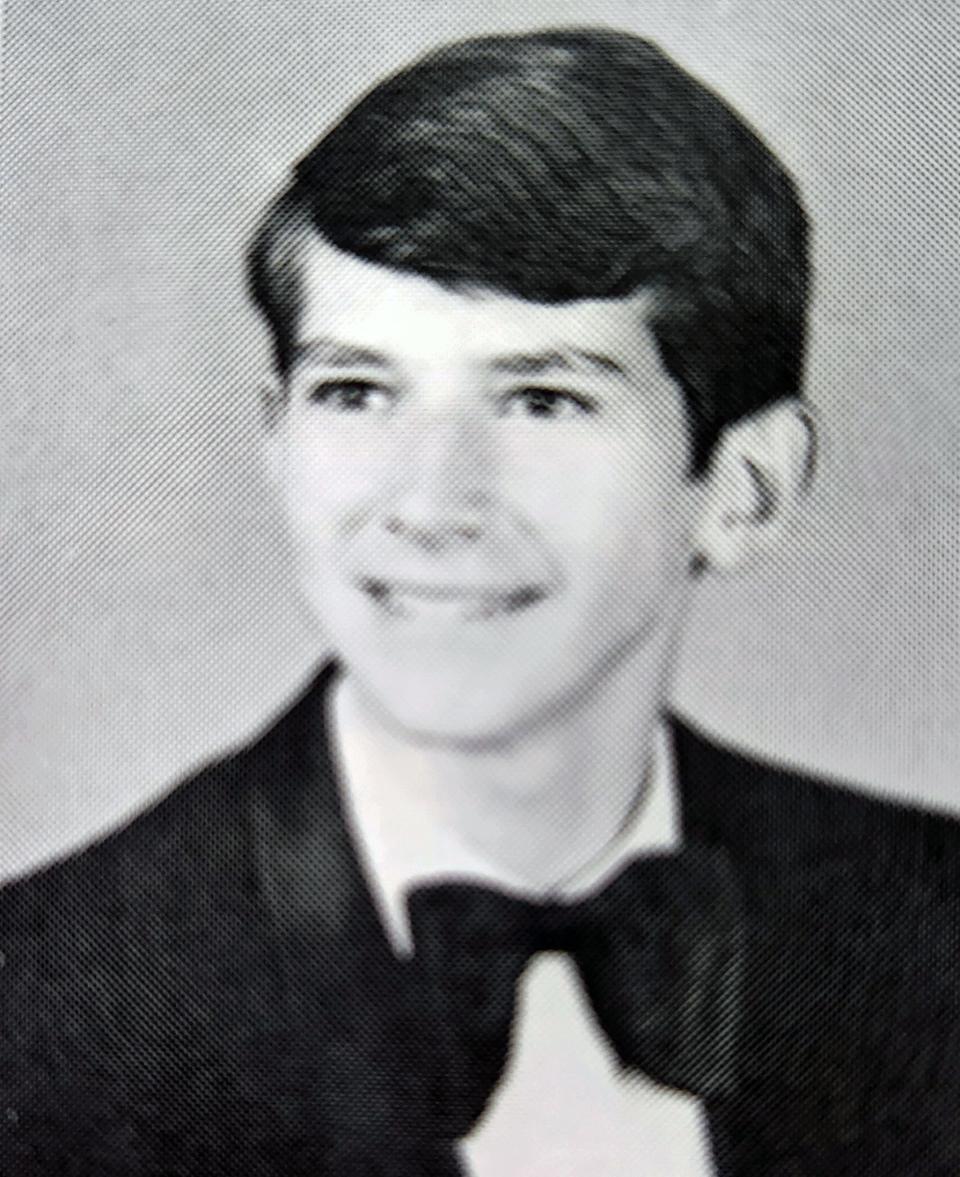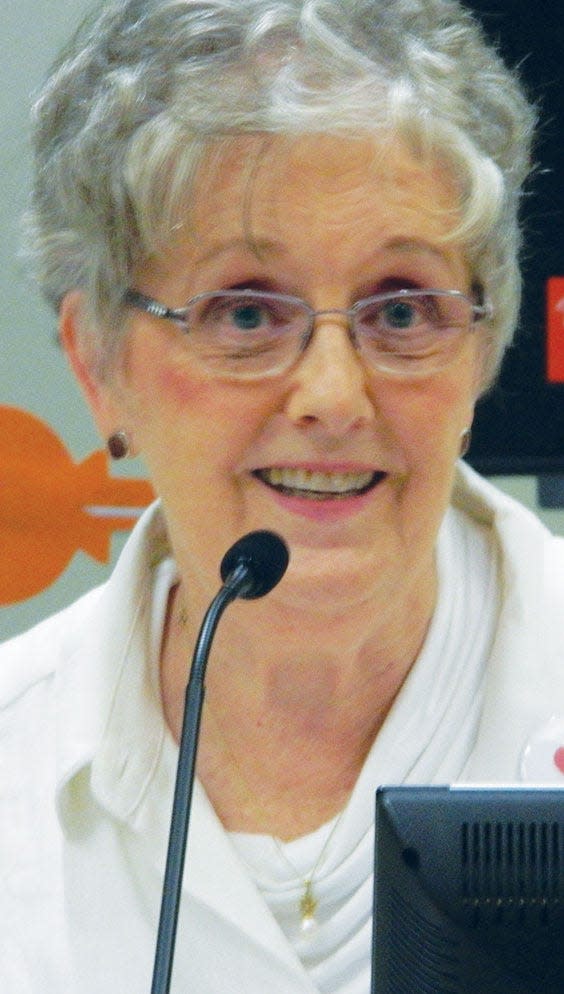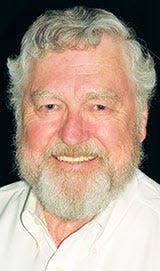The early years of Chris Keller; growing up in Oak Ridge
Benita Albert brings us another two-part series on an Oak Ridge Schools graduate. She tells first of the early years in Oak Ridge Schools and their impact on Chris Keller. Chris recalls “stacks of punch cards,” do you remember those?
Enjoy this story by Benita. It will bring back memories and introduce you to another successful person who grew up in Oak Ridge and is proud of that.
***

“Growing up in Oak Ridge, you are exposed to a lot of scientific activity and scientists, so it is easy to become interested in science as a career.” This comment from 1972 Oak Ridge High School alumnus, Chris Keller, was followed by his personal recollections of various science explorations in his formative and adolescent years. Many of his early Oak Ridge memories follow in this Part One installment of his story.
Chris is now the chief technology officer for Centricity Vision in Carlsbad, California, a medical technology research and development company. He has developed a handheld surgical device which is used in the delicate and challenging phase of cataract surgery known as the capsulotomy. Chris’ professional path and accomplishments, as well as more details on his latest work in support of ocular health will be discussed in the second installment of this two-part story.
Chris’ father, Lew Keller, earned a Ph.D. from MIT in 1960, and immediately accepted a position in the Chemistry Division of the Oak Ridge National Laboratory. He researched transuranium elements, became director of the Transuranium Research Laboratory, and ultimately served as director of the Chemistry Division.
The dedication of his father made a deep impression on Chris: “My father set a good example for the pursuit of knowledge, as he worked very hard at his job. After he got home from work, he would continue to work on his papers and calculations late into the night. At times he had so much work that he had to carry two briefcases home.”
Chris’ mother, Dona, was a Radcliffe graduate in biology and a technical writer. She was a busy mother of four children: Chris, Claire (ORHS ’74), Elaine (ORHS ’75), and Elizabeth (ORHS ’78). Dona served as a Cub Scout den mother and as an adult team leader for Campfire Girls. She was active in the Oak Ridge community through the League of Women Voters and with her family’s activities at United Church, Chapel on the Hill. Dona also served as hostess for many dinners with visiting scientists who, as Chris recalled, “Came from all over the world: Russia, Germany, Poland, Yugoslavia, France and more.”
As mentioned above, Chris has fond memories of childhood and the emergence of his passion for science. He loved to run in the greenbelt woods. He collected stagnant water samples to explore the microbial world of protozoa and algae under a microscope. Chris wrote, “I often went to the Museum of Atomic Energy (as it was then called, and in an old building) where you could make a dime radioactive, and make your hair stand up with the Van de Graaff generator. I would collect little booklets, for free, that explained specific scientific subjects.”
Chris loved rock hunting trips with his close friend Mike Benjamin (ORHS ’71) and Mike’s dad, Ben.
“It was very informative to talk to Mr. Benjamin about geology, to see how he polished stones, and how he cast gold to make jewelry," he said.
Chris said, “During eighth grade, I bought a 4.25-inch Newtonian reflector telescope from Edmund Scientific to look at the moon and planets (also to read the Western Oak Ridge Dairy Queen sign where they put up a new message every day). I showed my father what could be seen with the telescope, and he bought a 3.5-inch Questar catadioptric telescope which I still have today. We did some interesting astrophotography, for example: lunar eclipses, comets, many Messier (deep sky) objects, and the transit of Mercury across the sun. My father and I built a photographic darkroom in our basement where we made black-and-white prints from our negatives.”
For teacher Jackie Jacoby’s physics class at Oak Ridge High School, Chris used data from photos he took of the lunar eclipse of Feb. 10, 1971 to calculate the length of the Earth’s shadow.
In July 1971, the Keller family watched the launch of Apollo 15 from Cape Canaveral, Florida. Glenn Seaborg, then chairman of the Atomic Energy Commission, who worked with Chris’ father, arranged their special viewing admission passes. In 1988, Chris returned to Cape Kennedy (the renamed Cape Canaveral) where he watched the Space Shuttle launch from a five-mile distant viewing point. He said, “It took the sound 25 seconds to get to my ears, but it was still very loud.”
In the Oak Ridge Schools, Chris maximized his science immersion both in and out of class. He expressed gratitude for Robertsville Junior High teacher Leonard Goforth, who organized and sponsored afterschool activities for the Future Scientists of America Club. He participated in Science Club sponsored by ORHS chemistry teacher Powell Puckett, and he served as the club president during his senior year.
Chris, like many other students, availed themselves of afterschool hours in Barry Fernandez’s computer classroom getting extra time on the IBM 1620 computer. It was a “cool place” to be for more than the obvious reason that it was the only air-conditioned classroom in the school at the time. It was also the place where aspiring computer aficionados met and shared novel ideas, and where the aural ambience included a radio usually tuned to the Oak Ridge music station WATO.
Chris recalled, “We (ORHS computer students) were limited to the 20 kilobytes of ferrite core memory, and we carried around thick stacks of punch cards (sequentially numbered in case you dropped them and they got shuffled). The computer room was often crowded late into the night with students waiting for their turn on the single card punch machine, or to run their deck though the computer with the pre-compiler that Peter Johnson (ORHS ’72) wrote to check for syntax errors, and then to run it again with the compiler, and then finally to run the compiled program.” Telling technology students of today about second-generation, batch processing computers (e.g., the IBM 1620 which was considered state-of-the-art at its public debut in 1963) is now “ancient” tech history. Chris along with many other ORHS computer classmates have gone on to advance technological science and applications in profound and diverse ways in their later careers.
Chris remembered Karl Von Halle (ORHS ’73) whose father opened his woodworking shop to his Cub Ccout troop. Chris said they learned to work with tools and made projects such as his wooden, combination footstool/storage chest. An infatuation with making things led Chris to enroll in an ORHS machine shop class his senior year. In that class, led by teacher Charles Carnes, Chris proudly recalled winning the Tri-County Machine Shop Award for construction of trammel points.
Other special honors came his way as Chris completed his ORHS years, a 1971 National Merit Semifinalist recognition and the Bausch and Lomb Outstanding ORHS Science Student Award. The receipt of a Union Carbide Scholastic Award in 1972 included “a very special slide rule, which I still have,” Chris mused.
The combination effect of all the above moments would set Chris on the way to defining his career. Along the way, Chris would say that there were many twists and turns, but all were valuable learning experiences. His curiosity and drive grew through various stages of work and studies. After receiving an undergraduate degree in chemistry, followed by a secondary science teacher certification, he taught high school physics for two years. As a graduate student at Georgia Tech and later work at IBM, he used computer aided design systems in mechanical design and used computers to interface with sensors and to control mechanical test systems. In his decade with IBM (1983-1992), he earned several patents as an engineer for hard disc drive design.
From 1992-98, while completing his Ph.D. in Materials Science at the University of California Berkeley, Chris delighted in access to a microfabrication lab where he could pursue the design and fabrication of integrated circuits for microelectromechanical systems (MEMS). Chris’ professional journey was focusing in on a unique, state-of-the-art niche with numerous possibilities. The second part of his story will describe his MEMS fabrication partnerships with NASA, academic research institutes, and within his own company (later to align with Centricity Vision) in improving surgical instruments used in cataract surgery.
As his former teacher, I could not be prouder to tell Chris’ story. In discussions with him, I heard the ambivalence he felt for the various trails his professional life has traversed in finding fulfilling and rewarding scientific challenges. However, it seems to me that the technical world was also struggling to catch up to Chris’ vision and passion. Chris spoke of his desire to continue his research and to follow his passion for problem solving for at least another 20 years with no retirement thoughts slowing him down. Perhaps this means that his mind is already on to the next big project?
Advice to current high school students
Finally, I asked Chris to offer advice to current ORHS students who might be interested in a STEM career. His sage words follow.
“My advice to students. Creativity is very important, and to a large extent, it can be developed through practice, constantly trying to think of different ways to solve problems and by examining the subconscious assumptions and biases that may be constraining your thinking. It is necessary to learn as much as you can about science and engineering so that the subconscious idea generator in your brain has facts and principles to work with (even while you are asleep).”
He continued, “In the relatively near future, artificial intelligence will be able to design products from scratch, and even discover new mathematics and laws of science better than humans can. This means that the owners of companies will not hire as many engineers as today, in the same way as assembly line workers are being replaced by robots. It will be a challenge to society to figure out how to create a niche where scientists, mathematicians, and engineers will remain important. It will be wise to have a solid background in science and mathematics regardless of where you end up in the world of the future.”

***
Well, you can see Chris has moved on from “punch cards.” He is now thinking about artificial intelligence. Next Benita will take you through Chris’ amazing and varied career.
D. Ray Smith is the city of Oak Ridge historian. His "Historically Speaking" column is published each week in The Oak Ridger.

This article originally appeared on Oakridger: The early years of Chris Keller; growing up in Oak Ridge

